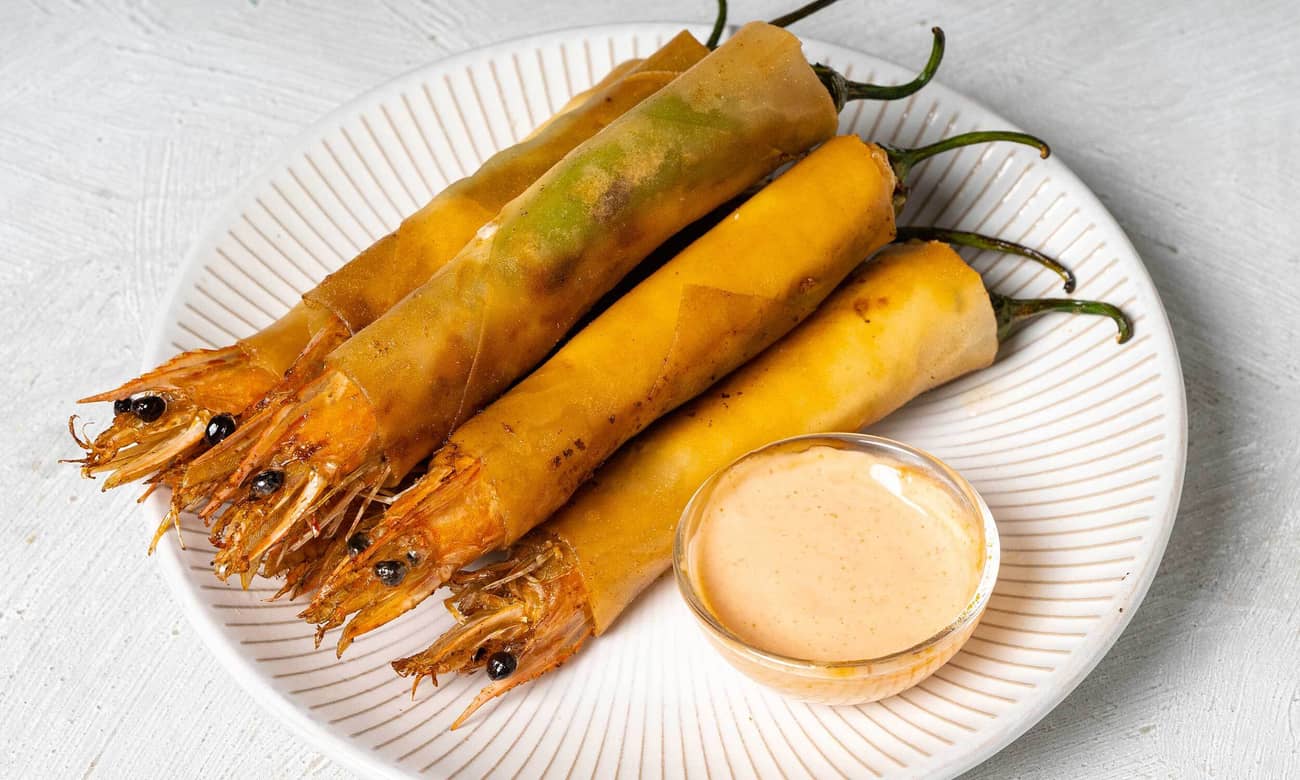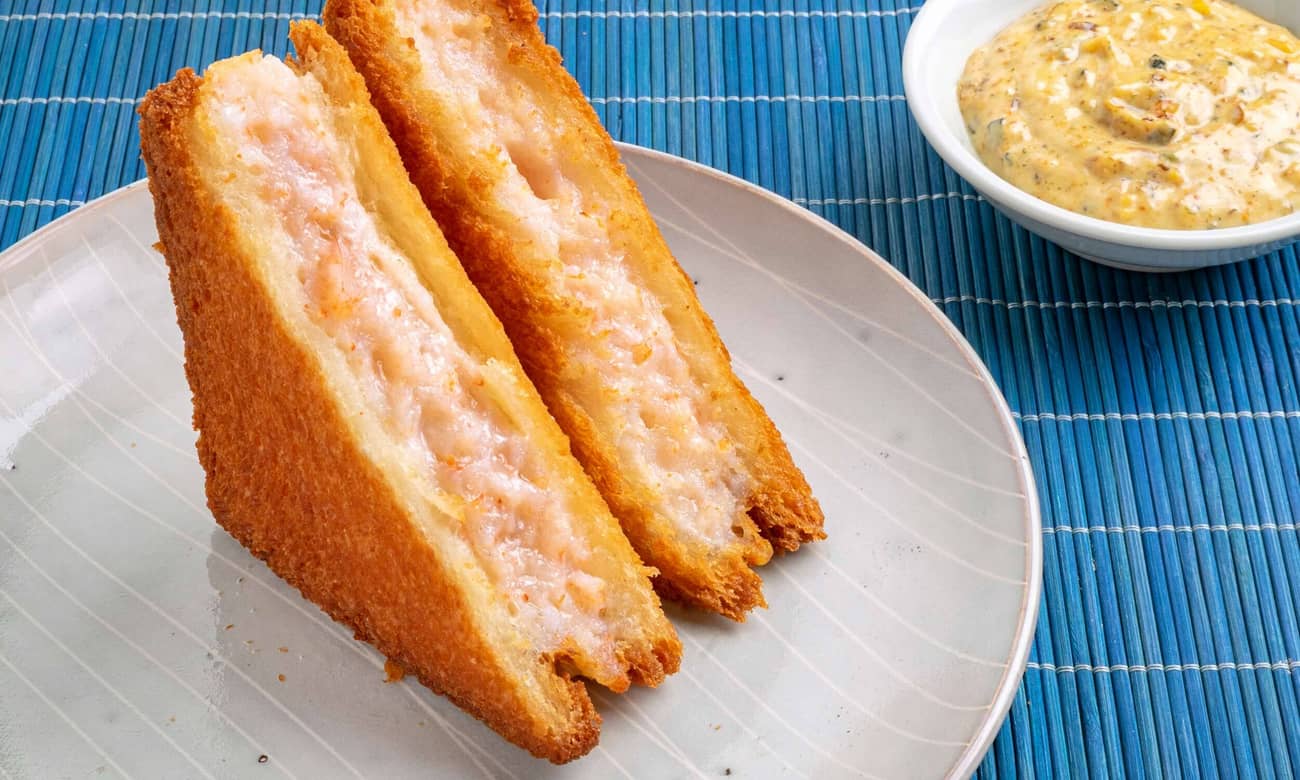
This Chinese-style fresh spring roll features a vegetable-heavy filling and a flavorful cast of add-ons: crushed peanuts, seaweed crunch, and tangy sauce.
Looking for a healthy meal that’s not a salad? Go for fresh Chinese-style lumpia, or Chinese lumpiang sariwa: a jumble of vegetables and mushrooms folded into lumpia wrappers burrito-style, served with crushed peanuts, seaweed crunch, and a syrupy, tangy sauce. Hearty but never heavy, you can enjoy it as a light lunch or a savory snack for merienda.
Lumpia comes from China, not exactly from Shanghai. Before we deep-fried skinny meat-filled spring rolls for birthday parties, there was the fresh, unfried spring roll introduced by pre-colonial Chinese traders. In Hokkien, the language spoken in Fujian province, they called it lunpia (潤餅), meaning “soft pancake”.
In the Philippines, lumpia refers to spring rolls of the fried (prito) and fresh (sariwa) variety.
Look for flour-based lumpia wrappers in the grocery or palengke. You want them as big as dinner plates, pliable and sturdy enough to roll up burrito-style.
Filipino-style lumpiang sariwa, usually ubod, uses crepe-like egg wrappers that are thicker and softer than flour-based lumpia wrappers. Use them here if that's what you have, or if you prefer their softer bite.
This lumpia filling has the classic qualities of Fujianese cuisine: it's fresh, meaty, and non-greasy. It's almost a stir-fried salad, consisting mostly of thinly sliced vegetables, tofu, and mushrooms.
There’s just a bit of meat in the filling to lend savoriness (and please meat-eaters). Feel free to use other proteins to suit your taste.
Hoti, from Chinese hu tai (滸苔), means seaweed, but can also refer to the umami-packed combination of seaweed and crispy fried vermicelli noodles used in lumpia.
If you can't find Chinese hoti-labeled seaweed, Japanese nori or Korean gim, which are easier to find in most groceries, will work in this recipe.
Peanuts, a prevalent ingredient in Fujianese cuisine, are crushed, blended with sugar, and showered over (or inside) fresh lumpia.
If you're using fresh or unroasted peanuts, make sure to roast them in a pan or in the oven beforehand. It makes them crunchier and more flavorful.
The sauce comes together with stuff you already have in your pantry—brown sugar, soy sauce, fish sauce, hoisin sauce—save for one special ingredient: Chinkiang vinegar. Also labeled as Chinese black or brown rice vinegar, it has a dark color and a mellow, light acidity. You can find it in Chinese or Asian groceries.
Cook garlic and meat: Heat oil in a wok over medium heat. Add garlic and cook, stirring frequently, until soft and fragrant. Add pork and shrimp, and sauté until meat is cooked through but not browned, 5 minutes.
Cook vegetables: Increase heat to high. Add all of the vegetables to the wok and season with chicken stock. Cook filling, stirring constantly, until liquid has evaporated and vegetables are slightly cooked through—they should still be a little crisp, as the residual heat will continue to cook them.
Transfer filling to a colander or bowl-shaped strainer fitted over a mixing bowl to drain off excess liquid. Set aside and let completely cool.
Make lumpia sauce: Combine all sauce ingredients in a saucepan over medium heat. When it begins to boil, reduce heat to low and bring the sauce to a simmer. Continue cooking until sauce has thickened. Set aside.
Make crushed peanuts: Combine roasted peanuts and brown sugar in the bowl of a food processor. Pulse peanuts to a coarse grind, aiming for a crumbly texture with distinct bits—you don't want to pulverize them into a powder. Set aside.
Alternatively, crush peanuts with a mortar and pestle, or hand-chop with a sharp knife.
Fry vermicelli noodles: Heat oil in a pan over high heat. Once oil is hot, add vermicelli noodles and fry until brittle and crispy, 1–2 minutes. Do not brown. Transfer fried noodles to a plate lined with paper towels to drain excess oil.
Add seaweed: Once fried noodles are cool enough to handle, crumble them into a bowl. Shred or crumble dried seaweed into the noodles, then toss to combine. Set aside.
Serve: Prepare lumpia wrappers, lettuce leaves, lumpia filling, lumpia sauce, crushed peanuts, and seaweed crunch in individual plates and bowls.
To assemble lumpia, lay one lumpia wrapper (two if you want it sturdier) flat on a plate. Smear a line of sauce down the middle of the wrapper. Place a lettuce leaf on top. Add about 2–3 tablespoons of filling on top of the leaf, followed by some seaweed crunch.
Fold the bottom edge of the wrapper up, then fold the left and right sides over the filling, like a burrito. Drizzle the open side with sauce, sprinkle with crushed peanuts, and take a big bite.
For meat: chicken and egg; smoked fish like tilapia or bangus; plant-based ground meat; adobo flakes; or crab.
For vegetables: ubod (heart of palm), singkamas (turnip), toge (bean sprouts), sayote, and sweet potato.
Other forms of lumpia can provide inspiration. For example, Cavite and Laguna's lumpia fresca has fried garlic and chicharon bits.
Overall, you can treat lumpia as you would fried rice: It can take whatever leftovers or spare vegetables you have. Just make sure they're dry!
You can use glass or cellophane vermicelli noodles like sotanghon (mung bean glass noodles) or Korean sweet potato noodles used in japchae. These noodles puff up more than bihon (rice vermicelli) noodles.
Use rice wine or white rice vinegar.
According to Woks of Life, you can also use a bit of balsamic vinegar.

